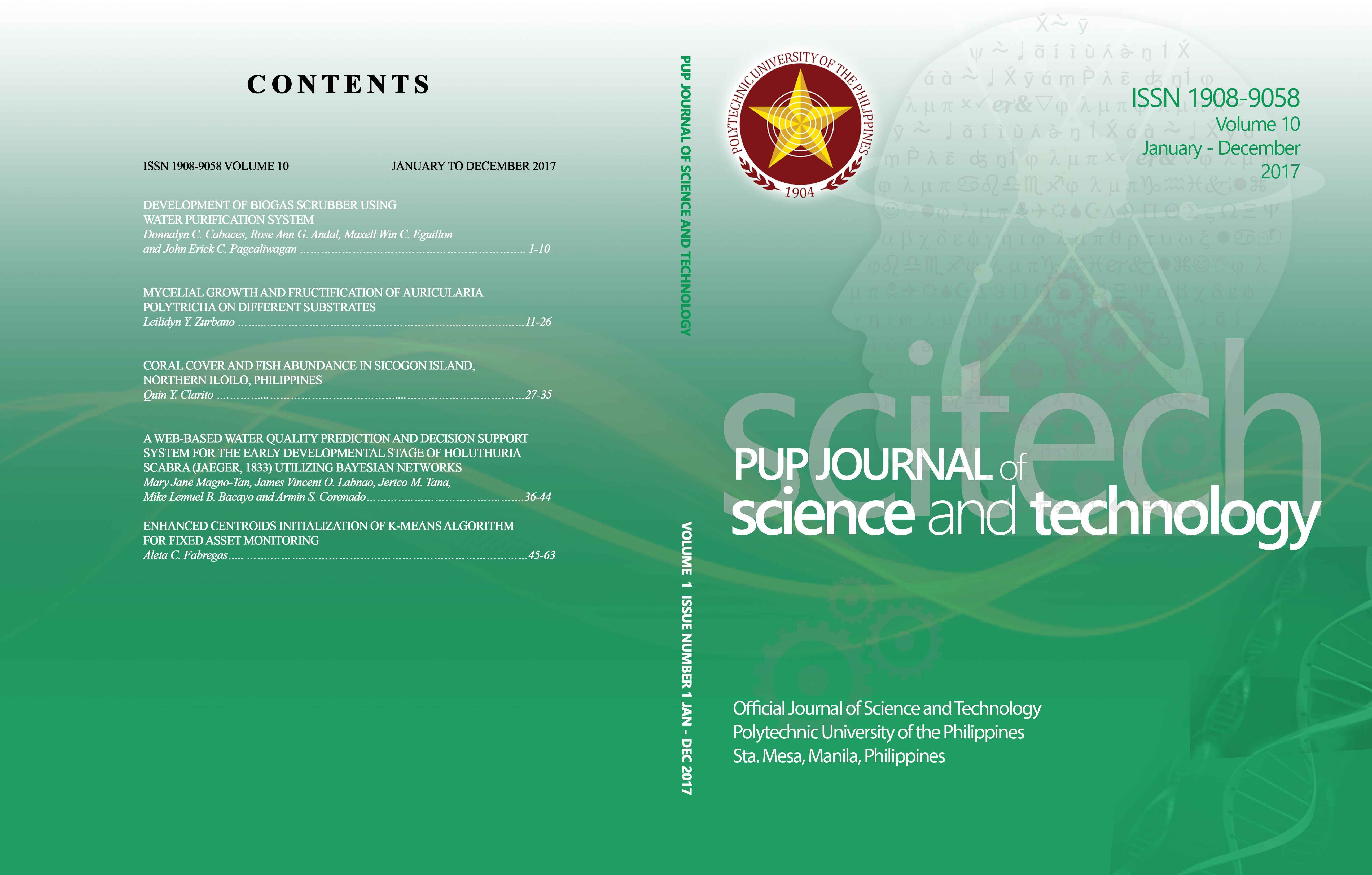Enhanced Centroids Initialization Of K-Means Algorithm For Fixed Asset Monitoring
DOI:
https://doi.org/10.70922/jrqpy780Keywords:
K-means algorithm, comparator function, depreciation, age factor, usage factorAbstract
This research developed a new method of initializing centroids for K-means algorithm and applied in determining the status of the fixed asset. The new method introduced the comparator function to determine the appropriate initial centroids and proved to be more efficient than the standard K-means. Since the initial seeds of the traditional K-means algorithm are chosen randomly leading to more looping and computational time, the improved method is proposed to eliminate the unspecified selection of the initial cluster and reduce inconsistency in the final clustering. The major responsibility of the Asset Management Office (AMO) is to determine the maintenance level of various equipment of the Polytechnic University of the Philippines (PUP). However, with a lot of equipment it managed, some are not properly maintained and this resulted to a very costly repair. In order to implement the proper repair to the equipment, the age factor based on the depreciation and usage factor of the physical asset are utilized in the Enhanced Initialization of Centroids for K-means algorithm. The clustering result of the new method produced more consistent level of maintenance. Once the equipment is clustered using the new method, that same equipment is no longer clustered into another level of maintenance unlike the standard K means, and this is how the author defined duplicates. Local optimization or convergence of clustering is faster in the new method as compared to the old K-means algorithm. This has been developed to solve the problem of AMO, knowing the status of the equipment based on age and usage factors to determine what is the proper level of maintenance (major or minor repair) with the higher percentage of consistency in the clustering of equipment is needed in the fixed asset monitoring. The enhanced centroids initialization of K-means is adapted by the AMO of the PUP in Sta. Mesa, Manila. The fixed asset monitoring application was developed using Java Eclipse obtaining actual data from a database using Mysql. To test the proposed algorithm, the fixed asset monitoring system also implemented the standard initialization of K-means algorithm for comparison. The test yielded more favorable results using the enhanced centroid initialization using new method based on speed and reduced number of duplicates, making the new method of fixed assets monitoring application more efficient and consistent. The data used are filtered and finalized by AMO. These are the following: (1) acknowledgement receipt for equipment for the years 2009, 2012, and 2014 with the acquisition date and acquisition cost of the ICT equipment; (2) office equipment and the inventory report of motor vehicle in 2016 with the description of utility vehicle containing the acquisition cost, date and status of running condition.
Downloads
References
Aggarwal, N., Aggarwal, K., & Gupta, K. (2012), Comparative Analysis of K-means and Enhanced K-means Clustering Algorithm for Data Mining. International Journal of Scientific and Engineering Research, 3 (3)
Commission on Audit (2015). Accounting Policies, Guidelines and Procedures, and Illustrative Accounting Entries. (COA Circular No. 2015 -007 Volume 1) Prescribing the Government Accounting Manual for Use of all National Government Agencies
Da Costa, J.C., Ortigueira, M.D., & Batista, A. G. (2013). K-means Clustering for Sleep Spindles Classification. International Journal of Information Technology and Computer Science (IJITCS), 10 (3), 77 – 85.
Daljit Kaur, Kiran Jyoti (2013). Enhancement in the Performance of K-means Algorithm. International Journal of Computer Science and Communication Engineering, 2 (1) 29 - 32.
Dhanachandra, N., Manglem, K., & Chanu, Y. (2015). Image Segmentation using K – means Clustering Algorithm and Subtractive Clustering Algorithm. Procedia Computer Science, Volume 54, 764-771, http://dx.doi.org/10.1016/j.procs. 2015.06.090
Fabregas, A., Gerardo, B., & Tanguilig III, B., (2017). Enhanced Initial Centroids for Kmeans Algorithm. International Journal of Information Technology and Computer Science (IJITCS), 9(1), 26-33, DOI: 10.5815/ijitcs.2017.01.04
Haraty, R., Dimishkieh, M., & Masud, M. (2015). An Enhanced K-means Algorithm for Pattern Discovery in Health Care Data. International Journal of Distributed Sensor Networks, Article ID 615740, 11 pages http://dx.doi.org/10.1155/2015/615740
Hong, L., & Yu, X., (2009). Application Research of k-means Clustering Algorithm in Image Retrieval System. Proceedings of the Second Symposium International Computer Science and Computational Technology, Huangshan 274-277, doi: 10.5120/17846-8790
Improved Outcomes software. Overview of K-means Clustering. Retrieved from
http://www.improvedoutcomes.com/docs/WebSiteDocs/Clustering/K-means_Clustering_Overview.htmImproved Outcomes software.K-means clustering, Retrieved from onmyphd.com/?p=k-means.clustering Algorithm and Examples
Kushwah, S. P. S., Rawat, K., & Gupta P (2012). Analysis and Comparison of Efficient Techniques of Clustering Algorithms in Data Mining. International Journal of Innovative Technology and Exploring Engineering (IJITEE), 1(3), 109- 113.
National Budget (2002). Manual on Disposal of Government Property. (NB Circular no.425)
Puri, P, & Sharma, I. (2015). Enhancement in K-means clustering to Analyze Software Architecture using Normalization. International Journal of Scientific and Engineering Research (IJSER), 604-611.
Rauf, A., Sheeba, Mahfooz, S., Khusro, S., & Javed, H. (2012), Enhanced K-Mean Clustering Algorithm to Reduce Number of Iterations and Time Complexity. Middle-East Journal of Scientific Research, 12 (7): 959-963, DOI: 10.5829/idosi.mejsr.2012.12.7.1845
Downloads
Published
Issue
Section
License
Copyright (c) 2018 PUP Journal of Science and Technology

This work is licensed under a Creative Commons Attribution-NonCommercial 4.0 International License.







